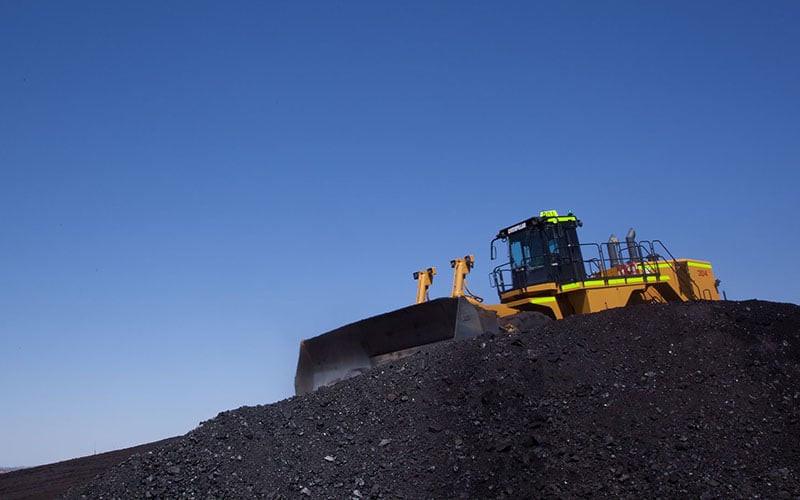
A bulldozer crawls over a pile of coal at the Kayenta Mine on the Navajo Nation in this photo from 2012. The mine closed in 2019, but a program that distributes free coal to tribal members, one ton at a time, continues this year with coal from another mine on the reservation. (Photo courtesy Peabody Energy)
WASHINGTON – For decades, coal from the Navajo Nation helped deliver water and helped power homes and businesses throughout Arizona and the Southwest.
Now, some of that coal is being used to heat Navajo homes as well.
For the fifth straight year, the Community Heating Resource Program (CHRP) is helping Navajo residents stay warm through fall and winter months by distributing coal for free from the Navajo Mine – one ton at a time.
The program kicked off this year on Oct. 28 and will continue through spring. It was formally established by Navajo Transitional Energy Co., which owns the mine in Fruitland, N.M., in 2016.
“We’ve probably provided over 18,000 tons of coal to Navajo families,” since 2016, said Cortasha Upshaw, the mine’s community affairs coordinator, who also oversees the program. She said “about 8,900 tons of coal” were distributed last winter alone.
Under the program, NTEC distributes tickets – each redeemable for one ton of coal – to the Navajo Nation’s participating local governments, or chapters, in Arizona, New Mexico and Utah. Chapter officials then decide how to distribute the tickets among community members, Upshaw said.
The number of tickets a chapter gets is based on its population. Participation is not required, but Upshaw said “94 of the 110 Navajo Nation chapters are enrolled in the program” this year, and that all but one chapter was enrolled in 2019.
Coal has long provided jobs on the Navajo Nation but has not always had the best reputation, with several coal-fired power plants in the region routinely listed among the worst producers of greenhouse gas emissions. But Nicole Horseherder, director of the environmental advocacy group Tó Nizhóní Ání, applauds the free coal program.
“You can’t compare what’s happening when Navajo Mine decides to deliver heating fuel to Navajo families who live out in the countryside, who don’t have any other way of heating their home,” Horseherder said. “This is different than when APS or SRP (Salt River Project) comes in and burns so many millions of tons.”
She said the Navajo Nation lost a huge source of heat when the Navajo Generating Station in Page closed last year, which also meant the closure of the nearby Kayenta Mine that fueled the power plant. The CHRP is helping to pick up the slack.
“I don’t see anything wrong with that,” said Horseherder, whose organization works to preserve the responsible use of land and water resources.
Upshaw said that when Kayenta was operating, it would sell coal to the tribe’s chapters in Arizona for “around $65 to $75” a ton. With Kayenta closed, she said, Navajo Mine absorbed those chapters into CHRP and waived any coal costs for community members.
The program also offers a bulk option that lets chapters get up to 20 tons of coal for distribution to chapter members.
Navajo Mine started giving out free coal informally to chapters in New Mexico in the 1980s, according to NTEC’s website, with the formal program launched in 2016.
The program normally runs through late March, but the duration “is dependent on the weather,” Upshaw said, with colder winters making for a longer coal season.
Other factors can come into play, too. With COVID-19 hitting the Navajo Nation hard earlier this year, distribution continued into April.
“(When) COVID hit the Navajo Nation, we had a couple of communities on Navajo land that actually had to isolate,” Upshaw said. “So we provided coal to communities that weren’t able to leave their local government area.”
Horseherder said comparing the industrial-scale burning of coal to the program’s small-scale distribution of a Navajo Nation resource to Navajo people is like comparing apples to oranges.
“That coal belongs to Navajo,” she said. “That’s what Navajo were using that coal for (heat) all along … before big companies came in and started burning tons of it.”

